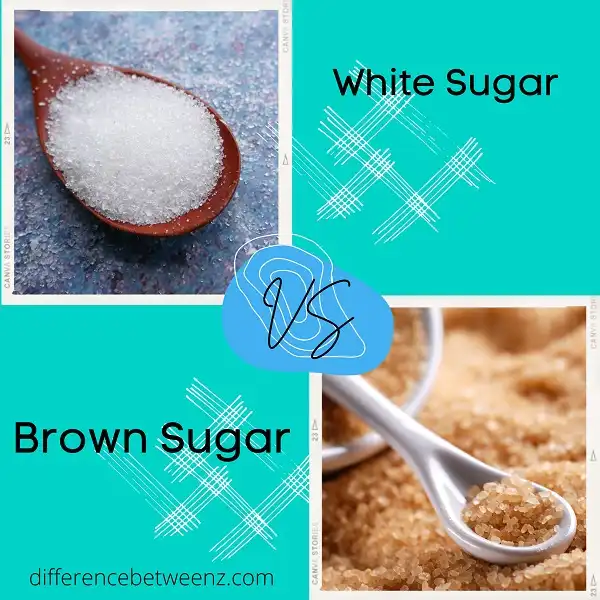Are you unsure of the difference between white sugar and brown sugar? Both sugars are used in baking, but they have different chemical compositions that affect how they behave in recipes. In this post, we’ll explain the differences between white sugar and brown sugar, and teach you how to substitute one for the other.
What is White Sugar?
White sugar is a highly refined sweetener that is commonly used in cooking and baking. This type of sugar is made by extracting the juice from sugar cane or beets and then processing it to remove impurities. White sugar has a pure, sweet taste and is typically sold in a granulated form to easily measure out exact quantities. However, some people avoid white sugar due to its high glycemic index, which can cause spikes in blood glucose levels and contribute to a range of health problems. Despite this potential downside, many cooks continue to rely on white sugar for its versatility, flavor, and ability to feed yeast in baking doughs. Whether you need a simple sweetener for your morning coffee or want to add extra sweetness to your favorite cookie recipe, white sugar is sure to deliver.
What is Brown Sugar?
Brown sugar is a type of sugar that has undergone an additional processing step after being refined from sugarcane or sugar beets. During this process, the natural molasses component of the sugar is concentrated, usually by boiling it down under pressure. Brown sugar can be produced in a variety of different shades, depending on its level of molasses content, and it usually contains varying amounts of other minerals and nutrients as well. Brown sugar is most commonly used to add sweetness to baked goods and other desserts, though it can also be used as a topping for fresh fruit or coffee. As such, it is an important ingredient in many recipes and is enjoyed by cooks around the world.
Difference between White Sugar and Brown Sugar
White sugar and brown sugar are two commonly used sweeteners that have certain distinctions between them. White sugar is the most commonly used form of sugar in cooking, as it is has a neutral taste and a fine crystalline texture that dissolves easily. In contrast, brown sugar has a slightly caramel-like flavor and tends to clump together more than white sugar. Additionally, brown sugar contains molasses, which gives it its characteristic color and flavor. While both white sugar and brown sugar are relatively straightforward to use, using one rather than the other can make a big difference in the end result of your recipe. Whether you prefer the rich sweetness of brown sugar or the classic taste of white sugar is ultimately up to you, but understanding the differences between these two ingredients is essential for any cook or baker.
Conclusion
The next time you’re baking, try using brown sugar in place of white sugar to give your desserts a richer flavor and more complex sweetness. You may be surprised at the difference it makes!


